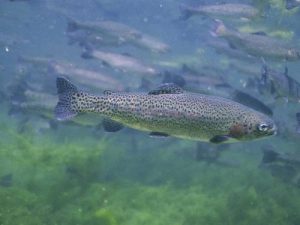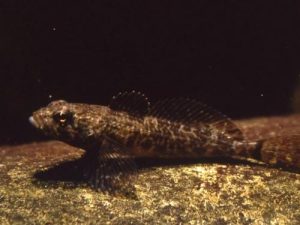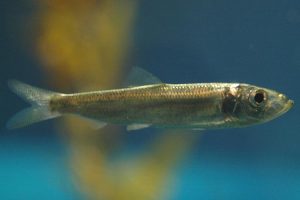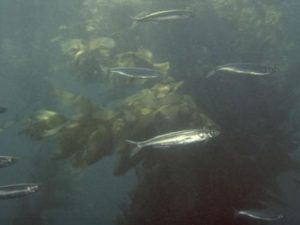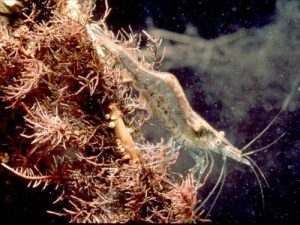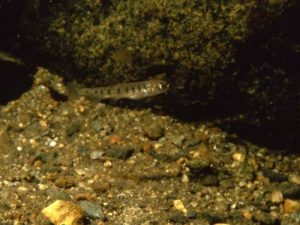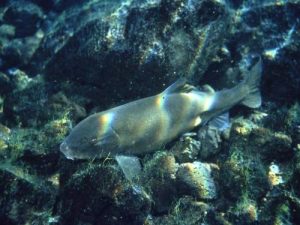Fish
No creatures are more symbolic of healthy watersheds than native fish. In our region, the health of coho salmon and steelhead indicate the health of a watershed.
In west Marin, Chinook salmon are also observed consistently in the Lagunitas Creek system.
These salmonids are anadromous fish. Anadromous fish:
- Are born and rear in freshwater streams
- Migrate to the ocean to grow and mature
- Return to freshwater to reproduce
Historically, many Marin County creeks supported these fish, but the numbers of native coho and steelhead have dropped dramatically in recent decades. Coho in particular have disappeared from many of the streams they once inhabited.
Coho salmon and steelhead
Life cycles
The life cycles of coho salmon and steelhead has many similarities. Their cycles vary in their:
- Precise schedule
- Microhabitat requirements
- Amount of time spent in freshwater and ocean
Coho salmon spend their first year in freshwater creeks. From there they migrate to the sea where they mature for two years and return to their native creek to spawn and die.
Steelhead have a similar life cycle, but they live in freshwater for one to two years, spend one to four years at sea, and return to spawn as many as four times. The steelhead life cycle and migration timing make steelhead more resilient to change.
Shared habitat needs
- A year-round supply of cool, clean water
- Diverse habitat with deep, quiet pools and shallow rocky areas (riffles)
- Clean spawning cobble and gravels without fine sediment
- Stable creek banks
- Dense shade canopy from creekside vegetation and cool water provide insect habitat (insect habitat provides needed nutrients)
- A supply of woody debris from fallen trees and branches
- Plenty of cover for refuge from predators and heavy storm flows, including:
- Undercut banks
- Rocks
- Tree roots
- Surface turbulence
- Overhanging creekside vegetation
- Deep quiet pools
Effects of urban development
Urban development in our watersheds can disrupt the natural processes that create these habitat qualities.
Riparian vegetation shields streams and rivers from summer and winter temperature extremes. The cover of leaves and branches brings shade to keep stream temperature cool in the summer and moderate in the winter. Loss of riparian vegetation leads to more intense stormflows and simplified stream channels. which make it hard for sensitive fish species to survive.
Runoff of chemicals from roads, yards, and industrial areas degrades water quality. Channelized reaches of creeks, lined with concrete, offer little habitat value. In many places dams and culverts limit fish passage.
Intact bay lands, streams running through the valley floor, and upland headwaters still provide critical habitat for fish.
Other fish species
Many other species of fish also inhabit Marin County’s streams, marshes and bays. Common native freshwater species include:
- California roach
- Threespine stickleback
- Sacramento sucker
- Prickly sculpin
The eelgrass beds of Richardson and Tomales Bays are especially rich in fish species. Other fish species that have been documented in these bay lands include:
- California bat ray
- Leopard shark
- Pacific herring
- Northern anchovy
More about fish in California
The University of California has a website about California fish.

